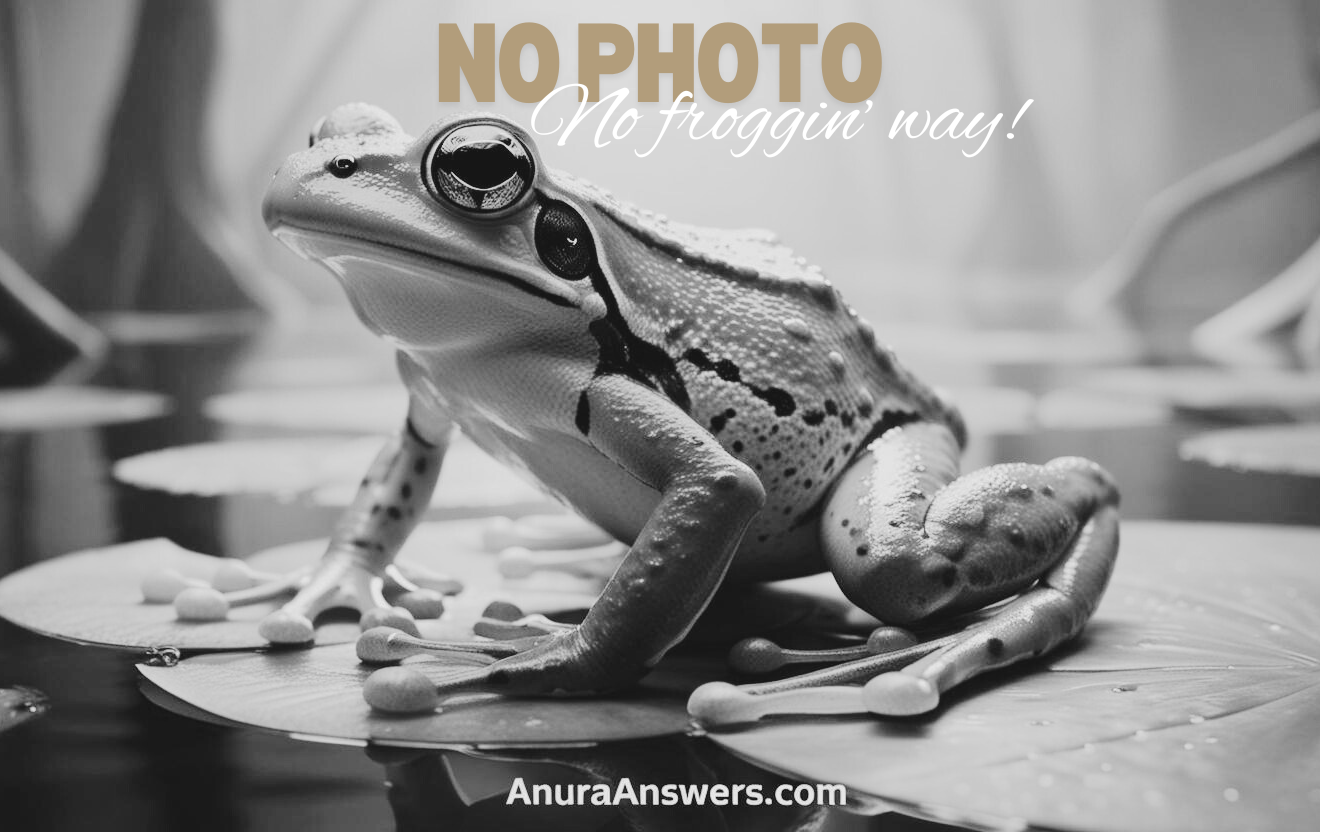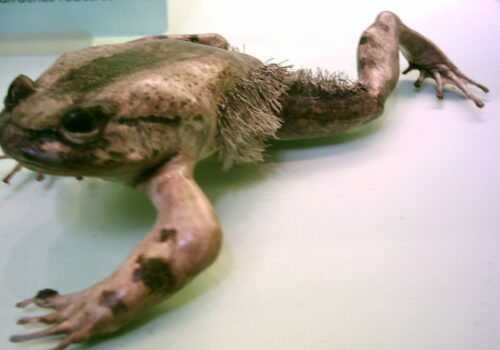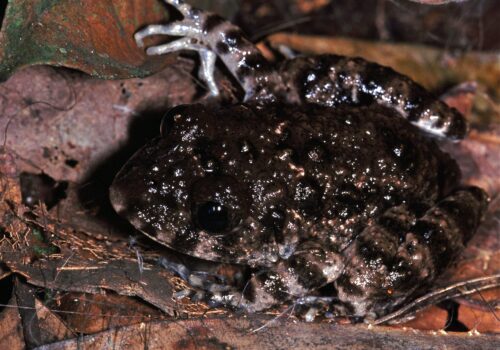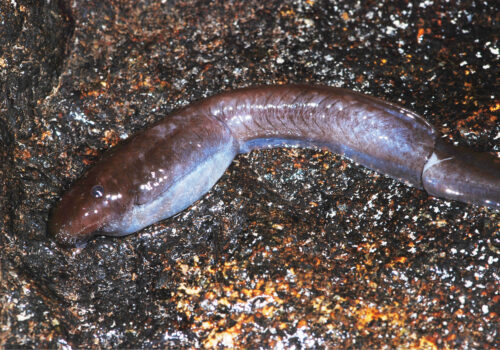The Hidden Jewel of Cameroon: Discovering Leptodactylodon erythrogaster#
Within the mist-covered forests of Cameroon, hidden beneath a lush tapestry of emerald leaves and shadowy moss, lives a frog species that few have encountered and fewer yet understand. Meet the Leptodactylodon erythrogaster—a frog whose name might be challenging to pronounce but whose existence holds vital insights into ecological balance, biodiversity, and conservation in Central Africa. Living among streams and shaded forest floors, this elusive amphibian remains relatively unknown, even among passionate herpetology enthusiasts and conservation advocates.
With its subtle markings and quiet presence, the Leptodactylodon erythrogaster fascinates not through vivid coloration or loud croaks, but through quiet persistence and unusual behavior. Known commonly as the Cameroon Red-Bellied Frog due to its distinctive underside coloration, this species offers a captivating glimpse into the complex web of interactions and adaptations thriving in the secluded ecosystems of Africa’s heartland.
Taxonomy and Classification#
For lovers of frogs and amphibians, scientific taxonomy is a road map to understanding each species’ place in the vast biological tree of life. Leptodactylodon erythrogaster sits within the Arthroleptidae family, an intriguing group of frogs known for their nuanced adaptations to rainforest life.
The genus Leptodactylodon comprises species whose lifestyles have evolved specifically to suit the shaded, moisture-rich forest ecosystems of Central and West Africa. Closely related species within the genus, such as Leptodactylodon boulengeri and Leptodactylodon perreti, share similarities in morphology and habitats, highlighting intriguing evolutionary patterns shaped by dense forest canopies and mountain streams.
Natural Habitat#
Cameroon, a nation celebrated for its biodiversity hotspots and rich ecosystem diversity, provides this unique amphibian a perfect home. But unlike some more conspicuous species, Leptodactylodon erythrogaster favors hidden streams and shaded forest floors. It primarily occurs in montane and submontane regions, often nestled beneath luxuriant foliage and a thick carpet of leaf litter and mosses.
Geographical Range#
Endemic to Cameroon, Leptodactylodon erythrogaster has a remarkably limited distribution. Seen primarily along the slopes of Mount Manengouba and surrounding regions within the Cameroon Highlands, this species is intimately connected to montane forests at elevations ranging from approximately 1,500 to over 2,000 meters above sea level.
Specific Habitat Preferences#
These frogs are intimately tied to pristine forest streams, requiring abundant moisture and cool, shaded environments to thrive. Under the forest’s dense canopy, where scattered rays of sunlight filter gently down, the temperature remains consistent and humidity levels high. Leptodactylodon erythrogaster often takes shelter beneath logs, stones, and fallen vegetation adjacent to streams, emerging cautiously at dusk or during periods after rainfall. These specialized habitat preferences highlight both their vulnerability to habitat disturbance and their extraordinary ecological niche.
Physical Characteristics#
Leptodactylodon erythrogaster may be modest in appearance compared to brightly hued poison dart frogs; yet, it has an undeniable charm that resonates with nature observers and biologists alike. Measuring only about 35 to 45 millimeters in length, this frog exhibits compact, slender proportions perfectly suited to life beneath tangled undergrowth and rocky streambeds.
The most striking aspect of its coloration resides hidden beneath: its vivid reddish-orange belly, giving rise to the “erythrogaster” moniker (Greek “erythro-” meaning red and “-gaster,” belly). The dorsal side, in contrast, is typically mottled with browns, olive-greens, and muted greys—providing excellent cryptic camouflage against forest debris, stones, and wet bark. Eye coloration is a dark, glossy brown, profoundly adapted for low-light detection, critical to their crepuscular and nocturnal activities.
Their legs are robust yet elegant, enabling powerful leaps and swift movements necessary for evading predators and hunting elusive prey in dense vegetation or the rocky contours of streams.
Behavior and Life Cycle#
Little-known, shy animals like Leptodactylodon erythrogaster often reveal their secrets slowly, through dedicated observation and patient study. Still, what has been uncovered provides fascinating insights into their lives and adaptive strategies.
Feeding Habits#
Primarily insectivorous, this frog species feeds mostly on small invertebrates: ants, termites, beetles, spiderlings, and tiny arthropods thriving on the forest floor. Using finely honed hunting strategies, it employs ambush tactics, patiently lurking beneath leaves, logs, or within rocky crevices. Upon sensing prey, this frog swiftly lunges with remarkable accuracy, powered by strong limbs built for explosive jumps.
Reproductive Behavior#
When rains drench the forest and fill streams, the melodic chorus of males resonates quietly amid rustling leaves and cascading waters. Breeding season often aligns with rainy periods to ensure suitable conditions for egg deposition and subsequent tadpole survival. Females deposit small clusters of gelatinous eggs in shallow, slow-moving stream pools or damp, sheltered depressions, granting their offspring refuge from stronger currents.
Interestingly, parental care behaviors, although rare among frogs, have been observed to some extent within this genus. Adults may remain nearby, subtly protecting their offspring by vigilance rather than aggressive behavior. Following a period of embryonic development, tadpoles hatch and further develop within the protective confines of stream pools, subsisting on vegetation and microorganisms until metamorphosing into miniatures of their parents—the cycle beautifully poised between delicacy and resilience.
Ecological Role#
In the intricate web of the Cameroonian rainforest, Leptodactylodon erythrogaster fulfills critical ecological functions. As efficient insectivores, these frogs naturally regulate insect populations, protecting plant life and contributing to the overall health of their ecosystems. Simultaneously, they serve as prey for larger amphibians, snakes, birds, and small mammals, making them vital components of the local food chain.
Furthermore, amphibians are frequently used as bioindicators, their presence—or absence—reflecting the environmental quality of their habitat. The delicate balance these frogs require, from clean water to intact vegetation, makes them perfect indicators of environmental health and ongoing habitat preservation efforts.
Threats and Conservation Status#
As with many amphibians globally, Leptodactylodon erythrogaster faces an increasing array of threats. Rampant habitat loss through deforestation, agricultural expansion, and logging operations pose immediate dangers, fragmenting habitats and isolating populations.
Climate change exacerbates these threats, altering the timing and quantity of rainfall, disrupting breeding cycles, and drying potentially crucial breeding sites. Human encroachment also introduces pollutants, pesticides, and novel diseases—such as chytrid fungus—posing significant concerns.
Currently classified by the IUCN as “Endangered,” dedicated conservation efforts are crucial. Several local organizations and research teams are working to document population sizes, advocate habitat protection, and promote sustainable land-use practices within the Cameroonian Highlands. By preserving Leptodactylodon erythrogaster, we also protect countless other species sharing these critical montane ecosystems.
Cultural and Scientific Significance#
While direct cultural representations of this cryptic species may be sparse, its existence symbolizes the remarkable biodiversity Cameroon harbors. Ecologists and local communities alike recognize amphibians as indicators of environmental stability and guardians of ecosystem functions, highlighting their inherent value beyond mere aesthetics.
Scientifically, Leptodactylodon erythrogaster contributes invaluable knowledge about amphibian adaptation, survival strategies in niche habitats, and ecosystem health. Their study furthers our understanding of evolutionary biology, ecology, and conservation science.
Conclusion#
Leptodactylodon erythrogaster embodies both the vulnerability and resilience of nature. Through careful understanding and dedicated conservation practice, we can ensure future generations might yet marvel at this diminutive creature’s astonishing adaptations and quiet beauty. Supporting conservation initiatives, preserving intact forests, and spreading awareness remain essential actions each nature advocate can embrace. Together, we safeguard not only a unique frog species but the invaluable biodiversity it represents in Cameroon’s spectacular rainforest canopy and shadow-dappled floors.










